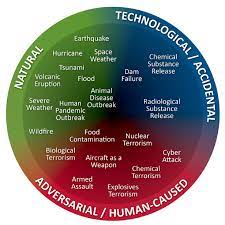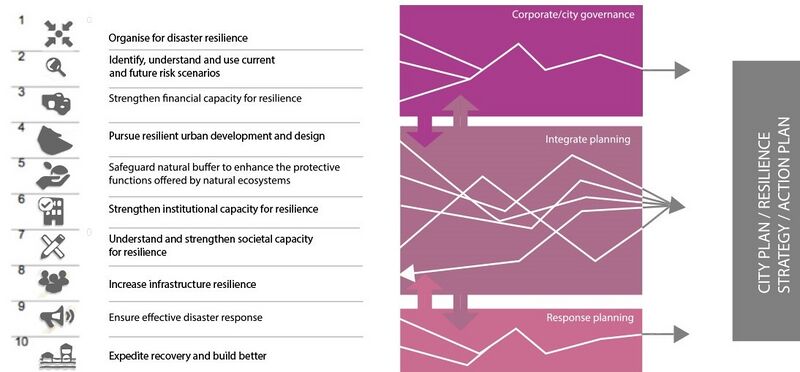City Resilience
| Public Safety | ||||||||||||||||||||||||||
|---|---|---|---|---|---|---|---|---|---|---|---|---|---|---|---|---|---|---|---|---|---|---|---|---|---|---|

| ||||||||||||||||||||||||||
| Sectors | Public Safety | |||||||||||||||||||||||||
| Contact | Brenda Bannan | |||||||||||||||||||||||||
| Topics | ||||||||||||||||||||||||||
Activities
| ||||||||||||||||||||||||||
- Authors
{{{summary}}}
The previous section focused on technology development to support whole community planning for disaster recovery, with emphasis on the requirements for multi-agency planning and decision -making involving an entire community and its physical, economic, and social resources.
Technology development strategies to enhance City (or Community) Resilience are closely aligned with capabilities for disaster recovery, insofar as they involve the entire scope of community functions. However, developing a technology strategy for enhancing the resilience of a community or region involves more than focusing on disaster response or recovery (or disaster resistance, as it is sometimes called), or even on the single issue of public safety as traditionally defined. A holistic appro ach to resilience and community sustainability involves the broad spectrum of human activities and interactions within the community as the sum of relationships between four interconnected systems:
- The natural environment of geography, climate and weather;
- The built environment of the city habitat, its engineered systems, and physical infrastructure;
- The social environment of human population, communities and socio-economic activities; and
- An information ecosystem that provides the means for understanding, interacting with, and managing the relationships between the natural, built, and human environments.
As the nation and its communities become more connected, networked, and technologically sophisticated, new challenges and opportunities arise that demand a rethinking of current approaches to public safety and emergency management. An integrated approach to city and community resilience holds the potential to greatly enhance overall public safety, emergency response, and disaster recovery, while addressing new and emerging threats to public safety and security.
Community resilience-building is effectively an aspect of mitigation planning. Figure 12 illustrates the range and relationships among the hazards that community resilience programs in the public safety arena may need to address.

After nearly a decade of research, planning, policy development, and implementation, there is no shortage of models, frameworks, and guidance documents for developing and establishing a community resilience program. (By way of example, simply conduct an online search for “community resilience frameworks,” or “smart city.”)14 One widely accepted strategy is the “Sendai Framework” of the United Nations Office for Disaster Risk Reduction.
Resilience as defined by the Sendai Framework is the ability of a system, community, or society exposed to hazards to resist, absorb, accommodate, adapt to, transform and recover from the effects of a hazard in a timely and efficient manner, including through the preservation and restoration of its Essential basic structures and functions through risk management. Increasingly, in the context of cities resilience is framed around the ability to withstand and bounce back from both acute shocks (natural and manmade) such as floods, earthquakes, hurricanes, wild-fires, chemical spills, power outages, as well as chronic stresses occurring over longer time scales, such as groundwater depletion or deforestation, or socio-economic issues such as homelessness and unemployment.
The United Nations Disaster Resilience Scorecard for Cities is a recommended starting point for cities to self-assess their preparedness. This Scorecard is structured around the “Ten Essentials for Making Cities Resilient”, first developed as part of the Hyogo Framework for Action in 2005, and then updated to support implementation of the Sendai Framework for Disaster Risk Reduction: 2015-2030.






